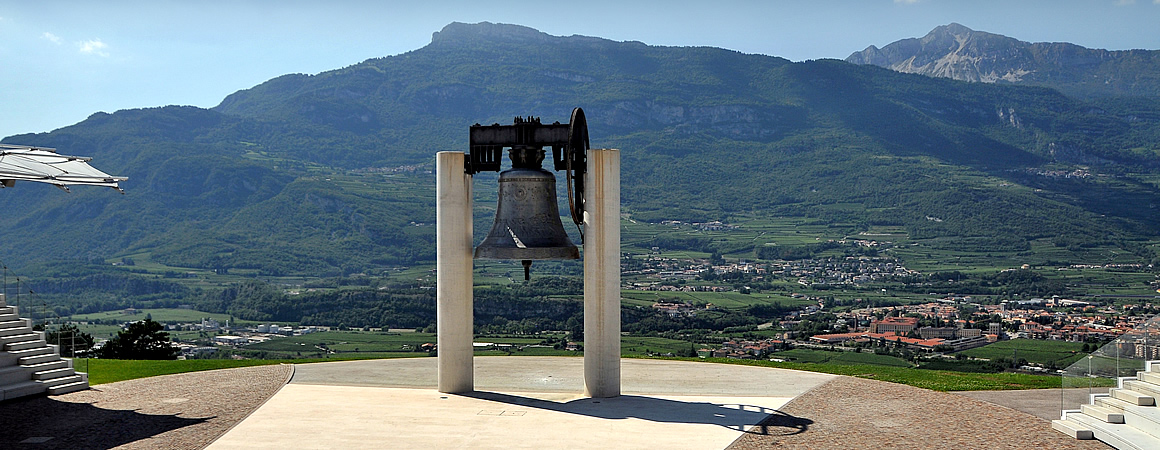Once again the sculptor Stefano Zuech was appointed to recreate the bas-relief for the new Bell which, being approximately 5 tonnes heavier than the previous one, required some modifications to cover an extra metre and a half of surface area. To this end, the upper section bears a circle inside which is the Latin inscription: “Dormite in umbra noctis, laetamini in lumine Christi, dum aere jungo populos, et vestras laudes celebro”; below this the hood of the Bell was divided into three bands to commemorate the heroes of air, land and sea.
In the upper part is a depiction of the “firmament"
complete with large and small stars, symbolising the female sponsors of the Bell. 
Within this featured the constellations of war and peace, designed by the architect Tiella. In other words, on one side were the stars as they appeared at dawn on 28 July 1914, when the Great War broke out, i.e. Orion, Taurus, Mercury, Auriga and Gemini. On the opposite side, meanwhile, were the constellations as they appeared at sunset on 11 November 1918, when the war ended, i.e. Ophiuchus, Hercules, Corona, Boötes and the Great Bear. The correct arrangement of constellations was provided by a study carried out by the Archbishop of Pisa, Cardinal Pietro Maffi, who was an eminent astronomer as well as a scholar and philosopher.
Turning its attention to human affairs, the central part of the Bell featured the Ecce Homo in a double crown: of thorns (symbol of earthly suffering) and rays of light (symbol of heavenly glory). In the corresponding place on the other side was the face of Our Lady of Sorrows, the Mater Dolens, conveying an expression of infinite tenderness.
Subsequently (in autumn 1950) below the Saviour's face was engraved Pope Pius XII's heartfelt warning and desperate attempt to prevent the Second World War: "Nothing is lost in Peace. All may be lost in War".






